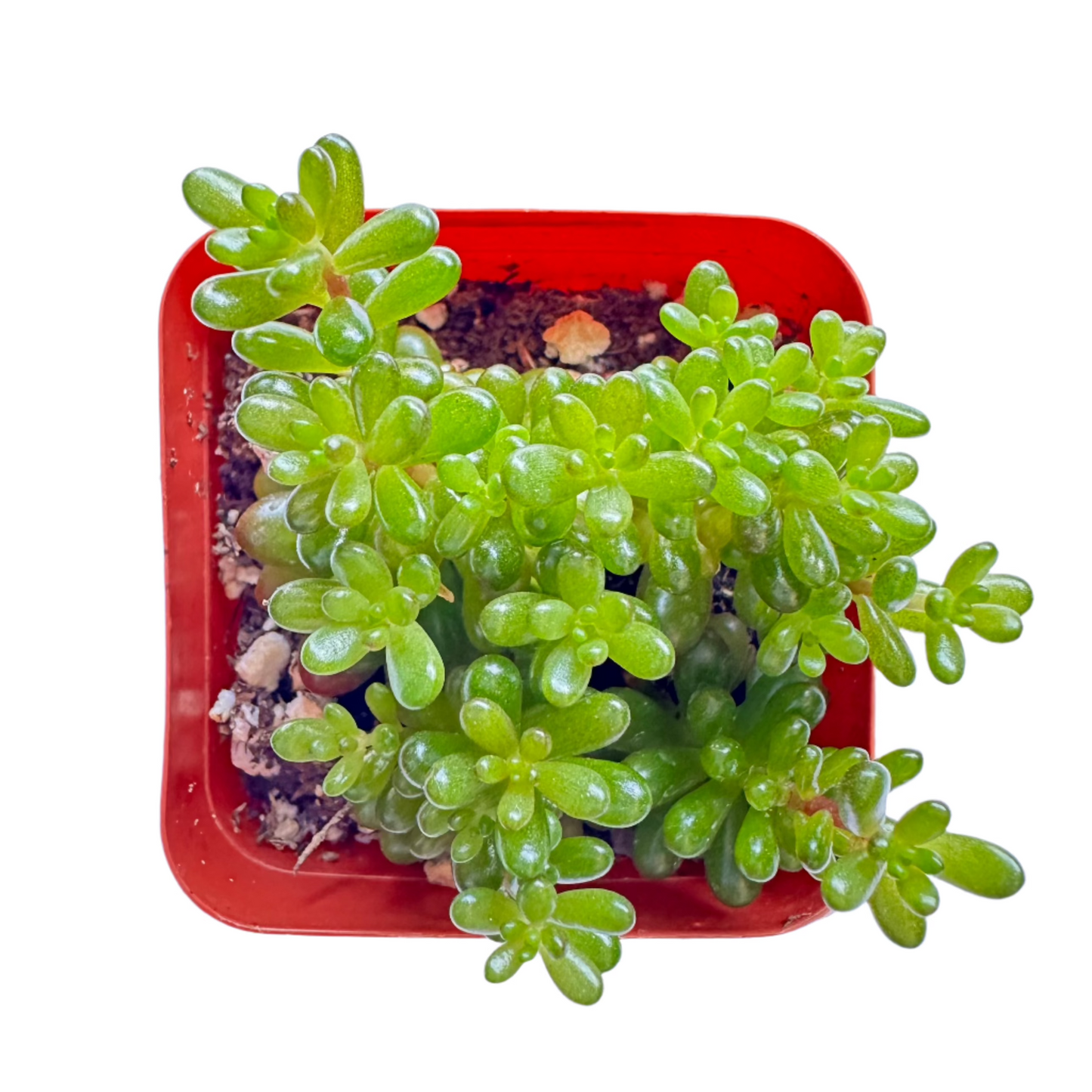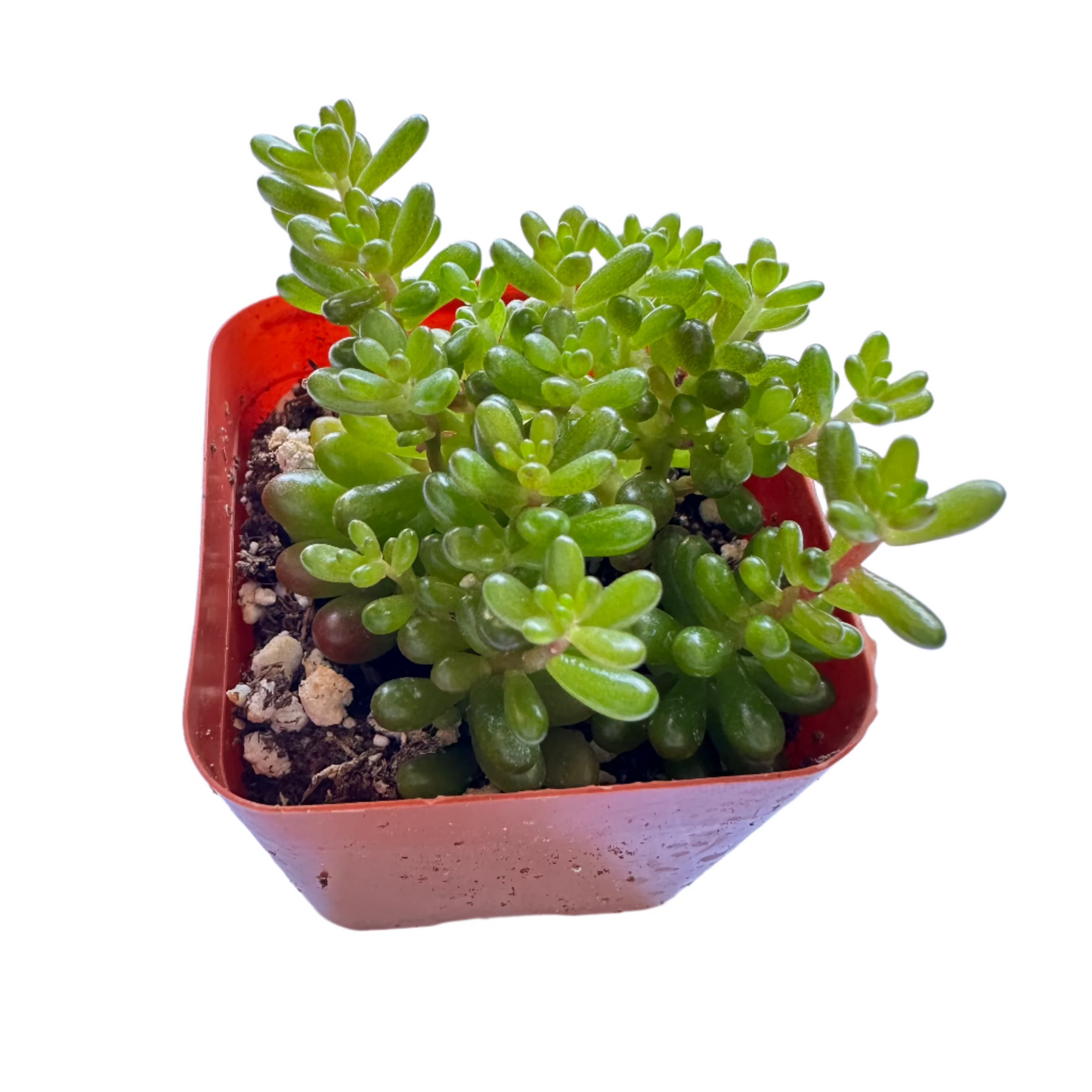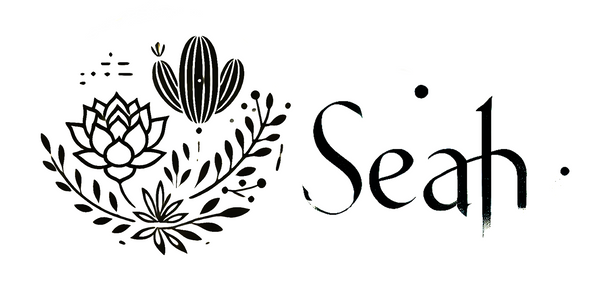Sedum rubrotinctum - Mini Me
Sedum rubrotinctum - Mini Me
Out of stock
Couldn't load pickup availability
📝 Description
Morphological Characteristics
Sedum rubrotinctum, commonly known as “Mini Me” or “Jelly Bean Plant,” is a small succulent belonging to the Crassulaceae family. It is recognized for its plump, oval-shaped leaves that resemble jelly beans. The leaves are typically green but can develop vibrant shades of red or bronze at the tips when exposed to bright sunlight or during cooler temperatures. This color change adds to its ornamental appeal. The leaves are arranged alternately along the stems, which can grow upright or trail over the edges of containers. In the spring and summer months, the plant produces small, star-shaped yellow flowers that bloom at the tips of the stems.
Growth Habits
Sedum rubrotinctum is a fast-growing, low-maintenance succulent that can reach up to 20 cm (8 inches) in height. It tends to spread and can form a dense ground cover if planted in the garden. The plant is native to Mexico and thrives in well-draining soils and semi-arid conditions. It is drought-tolerant and can withstand periods of neglect, making it suitable for novice gardeners.
Maintenance Points
• Lighting: Prefers bright, indirect sunlight to full sun. Exposure to ample sunlight enhances the red coloration at the leaf tips. However, intense midday sun, especially in hot climates, may cause leaf scorching. Providing some afternoon shade can be beneficial.
• Watering: Requires minimal watering. Allow the soil to dry out completely between waterings. Overwatering can lead to root rot and leaf drop. During the winter months, reduce watering frequency as the plant’s growth slows down.
• Soil: Use a well-draining succulent or cactus potting mix. Adding perlite or coarse sand improves drainage and prevents soil compaction.
• Temperature: Ideal temperatures range between 15-25°C (59-77°F). The plant is not frost-tolerant and should be protected from temperatures below 5°C (41°F). In colder regions, it is best grown indoors or moved inside during the winter.
• Fertilization: Feed sparingly during the growing season with a diluted, balanced, water-soluble fertilizer once a month. Over-fertilization can lead to excessive, weak growth.
• Potting: Choose a container with drainage holes to prevent water accumulation. Repotting is only necessary when the plant outgrows its container.
Reproduction Method
Sedum rubrotinctum can be easily propagated through leaf cuttings and stem cuttings.
1. Leaf Cuttings:
• Gently remove healthy leaves from the stem by twisting them off, ensuring the entire leaf, including the base, comes away intact.
• Allow the leaves to dry and callus over for a day or two in a shaded area.
• Place the callused end of the leaves on top of well-draining soil without burying them.
• Mist the soil lightly until roots and new rosettes begin to form, then water sparingly.
2. Stem Cuttings:
• Cut a healthy stem segment using a clean, sharp knife or scissors.
• Let the cutting dry for a few days until the cut end forms a callus.
• Plant the callused end into well-draining soil.
• Water lightly after planting and care for it as you would a mature plant once roots establish.
Additional Tips
• Pest Control: Watch for common pests such as mealybugs and aphids. If infestations occur, treat the plant with insecticidal soap or neem oil.
• Pruning: Remove any dead, shriveled, or overly elongated stems to maintain a compact and attractive shape.
• Propagation Caution: The leaves are delicate and may drop if the plant is handled roughly. Fallen leaves can be used for propagation.
• Safety Note: Sedum rubrotinctum is considered mildly toxic if ingested and may cause skin irritation in some individuals. Keep it out of reach of children and pets.
By providing appropriate care, Sedum rubrotinctum “Mini Me” can be a charming and colorful addition to your succulent collection, bringing unique texture and visual interest to indoor or outdoor garden spaces.
🌿 Care Tips
Plant Care
Light
Water
Soil
Temperature
🌟 Note: It’s normal for succulents to appear slightly shriveled after shipping. They usually recover within a few days in a suitable environment.
📦 Shipping Info
Seah Shipping Policy
Effective Date: November 2025
This Shipping Policy applies to orders delivered within the continental United States (the lower 48 states). By purchasing from Seah, you agree to the terms below.
1) Shipping Cost & Free Shipping
- Automatic rate calculation: Shipping is calculated at checkout based on weight, destination ZIP and carrier rates.
- Free Standard Shipping: Orders $59+ (pre-tax, after discounts) ship free to the lower 48 states.
- Alaska, Hawaii, Puerto Rico & other territories: Not eligible for free shipping or standard flat offers at this time.
- Taxes/Duties: Applicable sales tax and any fees are shown at checkout.
2) Processing Schedule
- Business days only: We process and ship Monday–Friday. No shipping on weekends or U.S. federal holidays.
- Handling time: 1–3 business days after payment confirmation.
- Cut-off time: Orders placed before 3:00 PM (PST) are prioritized for same-day processing; others roll to the next business day.
- Changes/Cancellations: Email support@seah.co within 12 hours of purchase; after that, the order may already be in processing.
3) Transit Times
| Method | Estimated Transit | Total ETA (Handling + Transit) |
|---|---|---|
| Standard | 5–8 business days | 6–11 business days |
| Express | 3–4 business days | 4–7 business days |
ETAs are estimates. Weather, holidays, carrier delays or high-volume periods may extend delivery times.
4) Seasonal Temperature & Plant Safety
- Winter (Nov–Mar): We strongly recommend adding a heat pack at checkout to protect plants from freezing. Orders shipped without a heat pack during cold conditions are not covered for cold damage.
- Summer heat: During extreme heat waves, we may hold shipments until temperatures normalize. We’ll notify you if there’s a hold.
- Packaging: Plants are carefully packed (bare-root or potted by type/size) to minimize transit stress.
5) Carriers & Tracking
- We ship via USPS / UPS / FedEx, selected automatically for best service to your address.
- When your order ships, you’ll receive a tracking email. Tracking typically activates within 24 hours.
- If you haven’t received tracking within 3 business days, contact us at support@seah.co or +1 (626)-999-1314.
6) Address Changes & Delivery Issues
- Before shipment: Request address changes within 12 hours of ordering.
- After shipment: We can’t modify the address once dispatched. Please contact the carrier for redirection options.
- PO Boxes: Supported for USPS only; UPS/FedEx require a street address.
- Seah isn’t responsible for delays or loss due to incorrect addresses provided at checkout.
7) Service Area
We currently ship to the continental U.S. (lower 48 states). Orders to AK/HI/PR and other territories are not eligible for free shipping and may be restricted.
8) Support
- Hours: Mon–Fri, 9:00 AM – 5:00 PM (PST)
- Phone: +1 (626)-999-1314
- Email: support@seah.co
- Address: 7870 Margaux Pl, Rancho Cucamonga, CA 91739, United States
Thank you for supporting our California nursery—each plant is hand-selected and packed with care. 🌱




